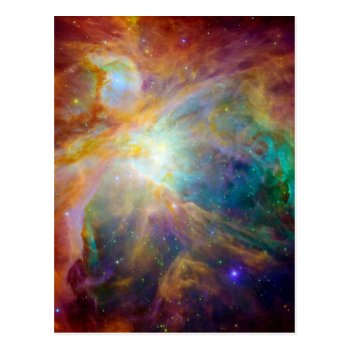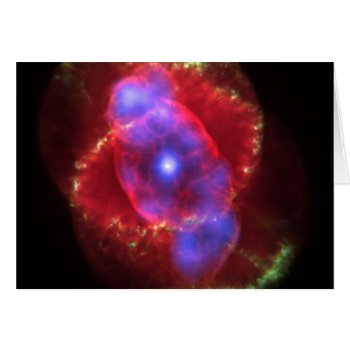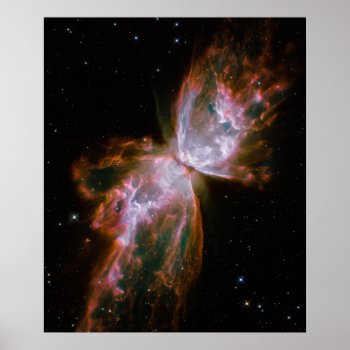This galaxy was first descovered by Johann Elert Bode in 1774 and is one of the easiest to see by amateur astronomers because of it's unususal brightness in the night sky. Recent obervations have determined that M81 may contain very little dark matter compared to most galaxies. Photo courtesy NASA.
Continue reading
Tag Archives: nasa
Astronaut Postcards
An astronaut on the moon with the reflection of a fellow astronaut in his helmet with planet Earth in the background
Continue reading
Orion Nebula (Hubble & Spitzer Telescopes) Post Cards
Photograph of the Orion Nebula This image shows stars, dust and gas inside the Orion Nebula, 1500 light years from Earth. This is a composite photo, based on ultraviolet and visible light images from the Hubble Space Telescope, and infrared views from the Spitzer Space Telescope. The result shows a swirling mass of gas and dust in shades of orange, green, blue and purple, spotted with bright stars. (The colours have been enhanced slightly here.) Credit: Image courtesy of NASA/JPL-Caltech/STScI Note that any distortion in the preview image is caused by compression artefacts, and won't be printed. You can personalise the design further if you'd prefer, such as by adding your name or other text, or adjusting the image – just click 'Customize' to see all the options. See more in my shop If you like this product, you can find more like it in my store: Click here to view all the other items with this design. Click here to see other space designs. Click here to visit the storefront and view all designs and products.
Continue reading
Galaxy Cluster MACS J0717 Postage
Galaxy Cluster MACS J0717 thanks to NASA and Hubble program.
Continue reading
Cat's Eye Nebula Card
The Cat's Eye Nebula (NGC 6543, Caldwell 6) is a planetary nebula in the constellation of Draco. Structurally, it is one of the most complex nebulae known, with high-resolution Hubble Space Telescope observations revealing remarkable structures such as knots, jets, bubbles and sinewy arc-like features. In the center of the Cat's Eye there is a bright and hot star; around 1000 years ago this star lost its outer envelope, producing the nebula. It was discovered by William Herschel on February 15, 1786, and was the first planetary nebula whose spectrum was investigated by the English amateur astronomer William Huggins in 1864. The results of the latter investigation demonstrated for the first time that planetary nebulae consist of hot gases, but not stars. Currently the nebula has been observed across the full electromagnetic spectrum, from far-infrared to X-rays. Modern studies reveal several mysteries. The intricacy of the structure may be caused in part by material ejected from a binary central star, but as yet, there is no direct evidence that the central star has a companion. Also, measurements of chemical abundances reveal a large discrepancy between measurements done by two different methods, the cause of which is uncertain. Hubble Telescope observations revealed a number of faint rings around the Eye, which are spherical shells ejected by the central star in the distant past. The exact mechanism of those ejections, however, is unclear.
Helix Nebula Business Card
“The Helix is a planetary nebula, the glowing gaseous envelope expelled by a dying, sun-like star. The Helix resembles a simple doughnut as seen from Earth. But looks can be deceiving. New evidence suggests that the Helix consists of two gaseous disks nearly perpendicular to each other.”(qtd. from HubbleSite.org NewsCenter release STScI-2004-32)Credit: NASA, ESA, C.R. O'Dell (Vanderbilt University), M. Meixner and P. McCullough (STScI)
Antennae Galaxies, NGC 4038/4039 Poster
“The Antennae galaxies take their name from the long antenna-like “arms” extending far out from the nuclei of the two galaxies, best seen by ground-based telescopes. These “tidal tails” were formed during the initial encounter of the galaxies some 200 to 300 million years ago. They give us a preview of what may happen when our Milky Way galaxy will collide with the neighboring Andromeda galaxy in several billion years.”(qtd. from HubbleSite.org NewsCenter release STScI-2006-46)Credit: NASA, ESA, and the Hubble Heritage Team (STScI/AURA)-ESA/Hubble Collaboration
Continue reading
Astronaut Stickers
Galaxy Cluster Abell 520 Zazzle Skin Orbit M Speaker Decal
Lovely rainbow space image of the Galaxy Cluster Abell 520 thanks to NASA/Hubble.
Continue reading
Butterfly Nebula Print
Butterfly Emerges from Stellar Demise in Planetary Nebula NGC 6302 From Wikipedia: NGC 6302 (also called the Bug Nebula or Butterfly Nebula), is a bipolar planetary nebula in the constellation Scorpius. It is one of the most interesting and complex planetary nebulae observed. The spectrum of NGC 6302 shows its central star is one of the hottest objects in the galaxy, with a surface temperature in excess of 200,000 K, implying that the star from which it formed must have been very large. The central star has never been observed and is surrounded by a particularly dense equatorial disc composed of gas and dust. This dense disc is postulated to have caused the star's outflows to form a bipolar structure (Gurzadyan 1997), similar to an hour-glass. This bipolar structure shows many interesting features seen in planetary nebulae such as ionization walls, knots and sharp edges to the lobes.
Continue reading










